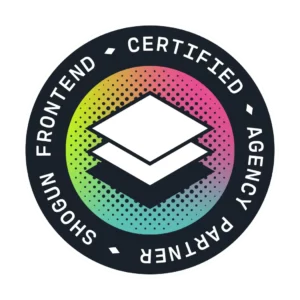
Headless & Composable
As an eCommerce store operator, if you haven’t heard of, or considered headless as an option for your store, now might be a good time to do so. Headless, along with composable commerce, is promising to enable a flexible eCommerce ecosystem for modern commerce. Several factors make these newer paradigms necessary or at least desirable. In short, headless is about having a custom front end with better speed and user experience than is possible with the bundled front end that comes with platforms. Composable commerce lets you strip and replace specific parts of your eCommerce backend when newer innovations happen. For example, let’s say there’s a much better product discovery platform in the market. Using composable commerce, you could strip out the existing discovery product and replace it without affecting anything else. Our blog on headless and composable commerce explains in detail what it is and its advantages for beginners.
Headless Without Composable
The two paradigms are used together in many ways, including the newly formed MACH Alliance. However, they are not necessarily tied together. Composable commerce is a much more significant investment. We expect only the enterprises and larger mid-market companies to shift to composable commerce in the short term.
However, headless is a much smaller investment and has more immediate gains for stores of all sizes. Gains such as user experience and site speed, both of which are becoming not something desirable but necessary to survive in a competitive market. Headless can be implemented on top of any platform that supports an API like BigCommerce, Adobe Commerce, or Shopify.
Shogun Frontend
However, headless implementation is not without downsides. One of the most significant downsides of a headless implementation is that any changes require the assistance of a technology team. Enter, Shogun Frontend, a platform that enables developers to create a custom frontend while allowing business and marketing users to edit content as needed without the technology team’s assistance. The folks at Shogun adopted PWA to make these sites superfast, giving stores an added boost in SEO ratings.
atmosol is a Certified Partner of Shogun Frontend
atmosol has been building eCommerce stores using platforms like BigCommerce, Adobe Commerce, or Shopify for over 16 years.

Headless & Composable
As an eCommerce store operator, if you haven’t heard of, or considered headless as an option for your store, now might be a good time to do so. Headless, along with composable commerce, is promising to enable a flexible eCommerce ecosystem for modern commerce. Several factors make these newer paradigms necessary or at least desirable. In short, headless is about having a custom front end with better speed and user experience than is possible with the bundled front end that comes with platforms. Composable commerce lets you strip and replace specific parts of your eCommerce backend when newer innovations happen. For example, let’s say there’s a much better product discovery platform in the market. Using composable commerce, you could strip out the existing discovery product and replace it without affecting anything else. Our blog on headless and composable commerce explains in detail what it is and its advantages for beginners.
Headless Without Composable
The two paradigms are used together in many ways, including the newly formed MACH Alliance. However, they are not necessarily tied together. Composable commerce is a much more significant investment. We expect enterprises and larger mid-market companies to shift to composable commerce in the short term.
However, headless is a much smaller investment and has more immediate gains for stores of all sizes. Gains such as user experience and site speed are becoming not something desirable but necessary to survive in a competitive market. Headless can be implemented on top of any platform that supports an API like BigCommerce, Adobe Commerce, or Shopify.
Shogun Frontend
However, headless implementation is not without downsides. One of the most significant downsides of a headless implementation is that any changes require the assistance of a technology team. Enter Shogun Frontend is a platform that enables developers to create a custom frontend while allowing business and marketing users to edit content without the technology team’s assistance. The folks at Shogun adopted PWA to make these sites superfast, giving stores an added boost in SEO ratings.
atmosol is a Certified Partner of Shogun Frontend
atmosol has been building eCommerce stores using platforms like BigCommerce, Adobe Commerce, or Shopify for over 16 years. We’ve also worked with Shogun’s page builder on BigCommerce and Shopify for several years. Over a decade of experience building SaaS products using frontend technologies like React and Angular. This puts us in a unique position to have strong expertise in both areas and well placed to build headless stores.
We’ve also been building these products on the cloud using micro-services for a long time, thus enabling us to adapt even to composable commerce quickly. All these aspects made it an obvious choice for us and Shogun to partner and get atmosol certified to take our clients on a journey of better user experience and speed. So, here’s to a great partnership and next-level user experience for our clients!








